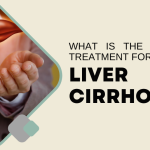Hyperpigmentation & Melasma Treatment Cure: Dr.Kanchan, Bharat Homeopathy
Dermatological challenges have been quite common in India owing to sun-drenched landscapes. Where some struggle with acne and pigmentation, others with dryness and inflammation, and the list goes on. And one thing that’s common among all is coloured patches, dark spots, and brown spots! Medically known as melasma, these hyperpigmented patches are quite trickier to deal with.
Although there is a dearth of resources available on Google explaining MELASMA, a proper document is still required! To answer a few of your queries, like what exactly melasma is and what causes melasma, etc., that we have received through social media or YouTube, we’ve reached out to our skin expert and patient’s favourite, Dr Kanchan.
Melasma is a pigmentary skin disorder marked by darker spots that usually seem brown or greyish, says Dr Kanchan, Homeopathic physician at Bharat Homeopathy. The cheeks, forehead, and upper lip are the areas of the face where it mostly appears.” (It can also appear in body areas like the arms and neck, which are frequently exposed to the sun.)
Is Melasma Common In India?
Hyperpigmentation, which results in the development of dark brown spots, freckles, or dark patches on the skin, is common on Indian skin. Excess deposits of melanin, the pigment that gives our skin and hair its colour, are the underlying causes of melasma. Other factors that may contribute to this discoloration include heat, stress, hormone changes, sun exposure, heredity, and post-inflammatory skin hyperpigmentation. Pigmentation and tanning are two of the most significant skin issues that Indians in the tropics deal with. Compared to our Western counterparts, we typically wrinkle less and have darker skin, says Dr Mahima, senior homeopathic physician at Bharat Homeopathy.
What is Melasma?
Melasma is one of the most challenging types of hyperpigmentation to treat. Melasma occurs due to increased melanogenesis in the melanocytes and is common among women with darker complexions. Various factors, such as increased exposure to the sun, excessive use of cosmetic products, family history, and use of oral contraceptives, have been believed to be the major causes of these hyperpigmented patches.
Beyond its external appearance, melasma significantly affects the quality of life of affected individuals. Reduced self-esteem, anxiety, and even despair can result from the condition’s visible nature. These psychological repercussions (are aggravated)/ are exacerbated/ become more severe by societal expectations and beauty standards; hence, it is critical to treat melasma holistically.
Is Sun Exposure The Major Cause Behind Melasma?
According to Dr. Kanchan, a distinguished dermatologist and panel head at Bharat Homeopathy Hospital, “Sun exposure is the primary contributory factor to the genesis of melasma.” The pigment responsible for skin tone, melanin, is overproduced in response to ultraviolet (UV) exposure, namely UVA and UVB rays. When this mechanism is dysregulated, as it does in melasma patients, melanin is distributed unevenly and dark patches develop.
Melasma is not always caused by sun exposure; in fact, if a person has a significant genetic tendency, they may get melasma without ever being exposed to the sun. The onset and progression of melasma are significantly influenced by hormonal variations, too. The use of oral contraceptives, pregnancy, and delivery can all cause or exacerbate melasma.
Can Melasma Be Prevented?
A number of treatment options and medications are available to manage this health condition. It’s crucial to understand that various treatment choices might provide an ineffective response, in which certain discolorations lighten or go away, but others stay the same. Frequent relapses are also common. Therefore, it’s important to be aware of any potential negative effects of the medication, such as increased skin whitening in the treated region or skin darkening brought on by inflammation. A dermatologist’s supervision while using prescribed medications can help patients meet their treatment objectives while additionally maintaining fewer relapses.
Best Hyperpigmentation Treatment : Homeopathic Treatment for Melasma
Homeopathy relies on understanding each person’s unique symptoms, responses to diseases, and potential for healing to diagnose and treat illnesses. Homoepathy is a medical approach based on the idea that the body is capable of healing itself. Practitioners use tiny quantities of natural ingredients, such as plants and minerals, as they promote healing.
In addition to treating the symptoms of melasma, homoeopathic treatment seeks to determine the patient’s individual vulnerability and the underlying causes of the condition. The selection of homeopathic skin pigmentation treatment can be dependent upon a number of factors, including the aetiology of the melasma, the patient’s individual experiences, and the specific triggers that exacerbate or mitigate the illness. The aim of homeopathic medicine for melasma is to treat the condition with a customised, comprehensive approach that takes into consideration the unique needs of each patient.
Amongst various homeopathic treatment for hyperpigmentation, Bharat Homeopathy’s melasma treatment is the most popular among patients. With a wide panel of skin specialists, Bharat Homeopathy specialises in offering natural treatments for a range of pigmentation issues and promotes a holistic approach to recovery. Our expert homeopathic physicians customise therapy regimens to meet each patient’s unique needs, with an emphasis on enhancing overall skin health.
Key takeaway:-
The most important thing to remember while managing melasma is to always use sunscreen and, if possible, stay away from other triggers such as hormone medications. Additionally, people with melasma should consult with a board-certified dermatologist for evaluation and recommended treatment plans to manage their condition


